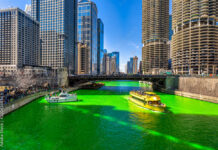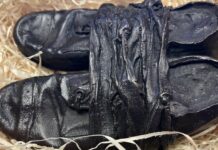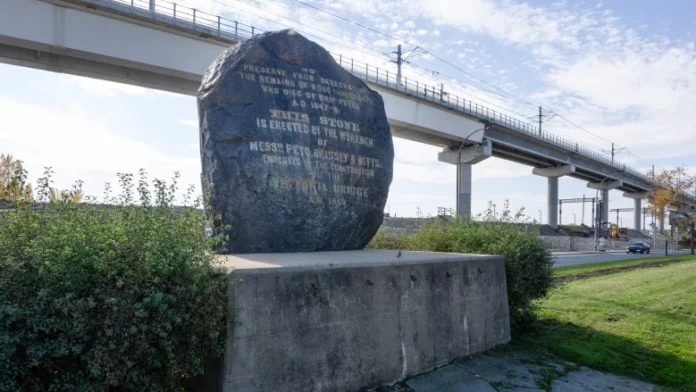Montreal Irish Memorial Park Foundation new owners of Black Rock monument

Pierre Saint-Arnaud · The Canadian Press · Posted: Oct 21, 2023 3:00 PM EDT | Last Updated: October 21
Montreal is one step closer to getting a commemorative park for the 6,000 Irish immigrants buried in unmarked graves in an industrial pocket of the city southeast of the downtown core.
This week, the Montreal Irish Memorial Park Foundation became the new owner of the solitary monument known as the Black Rock, a three-metre-tall boulder that marks the location of the largest mass grave in Canada.
The site, previously the property of the Anglican Diocese of Montreal, consists of a small patch of greenery in the median of a busy street near the base of the Victoria Bridge, which links Montreal to the south shore of the St. Lawrence River.
The foundation says the land donation by the diocese was key to its goal to transform the area — passed by around 23,000 drivers every day — into a park honouring the thousands of Irish people who died of typhus in 1847 while fleeing Ireland’s Great Famine.
- AUDIOExpansion of Montreal’s Black Rock memorial
- Bone analysis provides window into lives of Montreal’s Irish potato famine migrants
Though the story is a significant chapter in the history of the city, it’s unfamiliar to many Montrealers today.
The Black Rock monument itself was an initiative of Victoria Bridge construction workers, many of them Irish themselves, who removed the boulder from the St. Lawrence River in 1859 and placed it on land after discovering the remains of Irish typhus victims.
Pollution from nearby railroad and vehicle traffic eventually coloured the monument deep black, lending it its name.
Typhus in Montreal
The Great Famine claimed around a million victims in Ireland, according to historical estimates. Another million fled the country, including around 100,000 who headed for Canada, then a colony of British North America.
Typhus, a highly contagious disease known at the time as “ship fever,” killed thousands at sea. Some were buried around St. Andrew’s, N.B. Canadian officials intercepted thousands more travellers at Quebec’s Grosse-Île, then known as “Quarantine Island” and now a national historic site with over 5,000 graves.
But men, women and children “deemed in good health” were allowed to continue their journey to Montreal, bringing typhus with them. Around 70,000 Irish immigrants arrived on Montreal Island, whose previous population was only 50,000.
Montreal’s mayor at the time, John Mills, commissioned the construction of more than 20 large “fever shacks” in the
Pointe-Saint-Charles neighbourhood, where he and a religious order known as the Grey Nuns led efforts to care for the ill newcomers.
“The actions of Montrealers and Quebecers during the months of May to November 1847 represent the largest humanitarian action in Canadian history,” said Scott Phelan, Montreal Irish Memorial Park Foundation treasurer.
Many of them, including Mayor Mills himself, lost their lives. Some are among the dead buried in the mass grave.
“Imagine: these refugees are poor, they’re fleeing a famine, they speak only Irish (Gaelic), not French or English, and then all the citizens of Montreal donated their food, clothing, jobs,” Phelan continued.
“And let’s not forget that those 6,000 dead left over 1,000 orphans who were adopted by Quebecers, Montrealers and everywhere in the region. The humanitarian action of Montrealers and Quebecers that summer was extraordinary.”
The existence of the mass grave has never been in question, but archaeological digs in conjunction with the construction of a new light-rail train line through the area recently uncovered additional evidence: the remains of 14 people, 10 of them intact. Among them were five adults, two teenagers and three children, the youngest under a year old. The other four people, whose remains were not intact, were two adults and two babies.
With the city’s support, the Montreal Irish Memorial Park Foundation will be able to begin work on its project once
electricity company Hydro-Quebec completes a new facility nearby.
Construction of the park, including the reconfiguration of the street surrounding Black Rock, is expected to begin in either 2027 or 2028 and wrap up after two years.








































